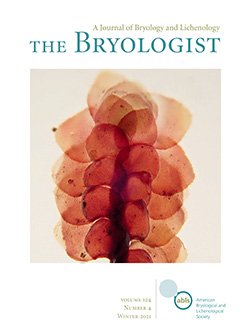Few data are available about cuticular wax of mosses, in general, as well as for Polytrichaceae. In addition, most of these studies investigated only the gametophyte. To improve understanding of wax components and their ecological roles, we compared the morphology and the chemical composition of cuticular waxes of the gametophyte and the sporophyte of the Brazilian species Pogonatum pensilvanicum, Polytrichadelphus pseudopolytrichum (endemic), and Polytrichum juniperinum. The waxes were extracted with dichloromethane, derivatized and analyzed using gas chromatography coupled with mass spectrometry. The total wax content was expressed in µg cm–2 and the compounds were identified based on mass fragmentation patterns. The morphology of epicuticular waxes was studied by scanning electron microscopy. Thicker wax layers were observed over the leafy gametophyte and the calyptra, ranging from 0.2 to 0.3 µg cm–2. For the sporophyte, the wax layer was not homogeneous, ranging from 0.01 to 0.04 µg cm–2 over the seta and from 0.07 to 0.2 µg cm–2 over the capsule. While alkanes and fatty acids were found in the two generations, primary alcohols were detected only in the leaves, and aldehydes and esters were found only in the sporophyte. Nonacosan-10-ol was more abundant in the calyptra and capsule. Film waxes were predominant in the gametophyte and sporophyte. Qualitative and quantitative differences were detected in wax composition according to life phases. As far as we know, this is the first time that the sporophyte parts were investigated separately. We hypothesized that the higher wax content in the calyptra may contribute to the protection of the capsule; however, this idea needs to be confirmed. Besides, our data support previous statements that the biosynthetic machinery for wax components was present in the earliest land plants, protecting both the gametophyte and the sporophyte.
How to translate text using browser tools
19 November 2021
Comparative analysis of cuticular waxes of the gametophyte and sporophyte of three species of Polytrichaceae
Tamara Machado Matos,
Denilson Fernandes Peralta,
Déborah Yara Alves Cursino dos Santos
ACCESS THE FULL ARTICLE

The Bryologist
Vol. 124 • No. 4
Winter 2021
Vol. 124 • No. 4
Winter 2021
Bryophytes
cuticle
ecological function
epicuticular waxes
life generations
Mosses
surface lipids




